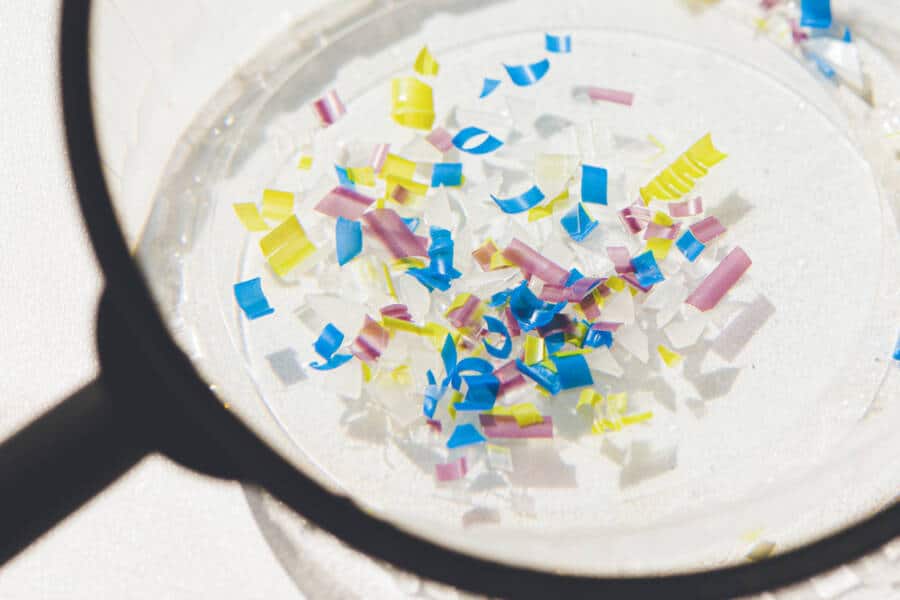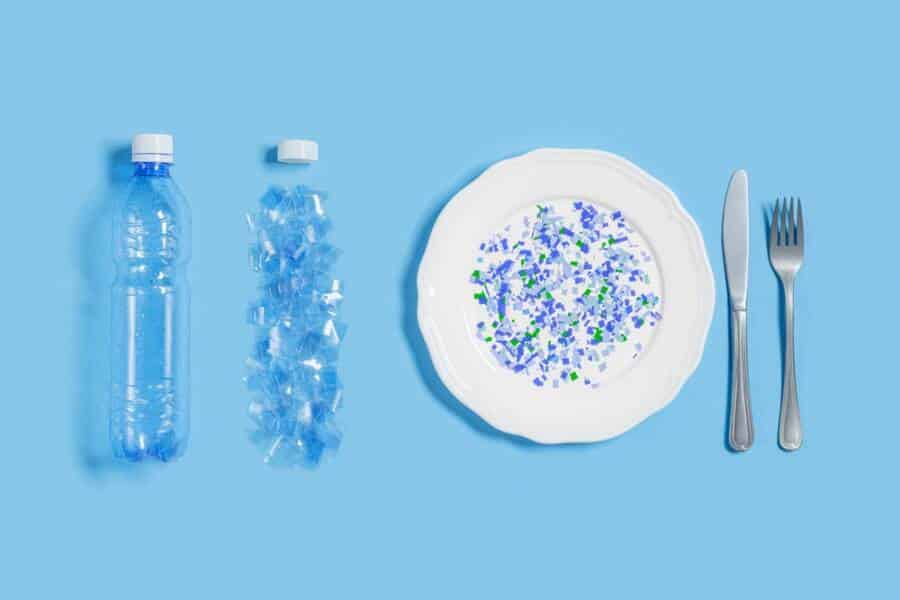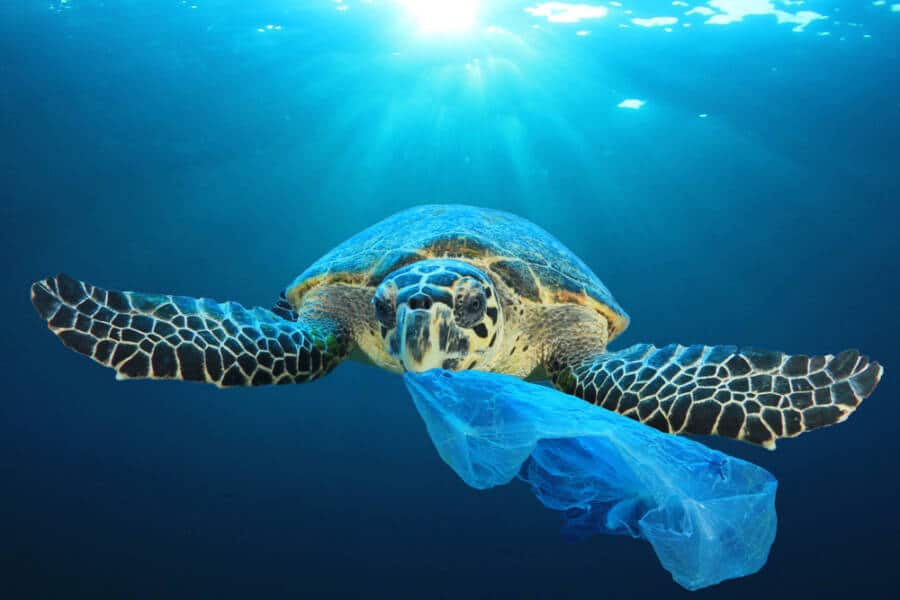Scientists have detected high levels of microplastics in human brains at much higher concentrations than in other organs.
Microplastics, which are tiny specks of degraded polymers in our water, air, and soil, have found a new home for themselves throughout the human body, including the kidney, liver, and placenta, over the past half-century. But the worst part is that researchers have found microplastics in human brains at much higher concentrations than other organs.
Worse, plastic accumulation appears to grow over time, increasing by 50% over the past decade or so. In a new study published in Nature Medicine, a group led by toxicologist Matthew Campen, PhD, Distinguished and Regents’ Professor in the UNM College of Pharmacy, noted that plastic concentrations in the brain seemed higher than in the kidney or liver.
Matthew Campen said that the accumulation rate reflects our planet’s increasing amounts of plastic waste. “This changes the landscape. It makes it so much more personal,” he stated. Also, they observed that much of the plastic appears to be much smaller than previously thought, on the nanometer scale, about two or three times the size of viruses.
As you might imagine, these findings have triggered alarm bells for experts. What does this all mean… and how does it affect YOU? Continue reading to learn more about the high levels of microplastics in human brains.

Are there really microplastics and nanoplastics in our brains?
This study has confirmed the existence of MNPs in the brain and at astonishing levels. Researchers examined 52 human brain samples between 2016 and 2024, all taken from the frontal cortex, the part of the brain that’s responsible for decision-making, judgment, and muscle movement.
They also examined kidney and liver samples from the same bodies, examining all tissues using molecular analysis and microscope imaging to identify the chemical composition. Brain and liver samples from 2024 had significantly higher concentrations of MNPs than those from 2016.
The total mass of plastics in the brains analyzed increased by roughly 50% between 2016 and 2024, and the researchers urge that drastically increasing concentrations of MNPs in our air, homes, and water could be to blame. According to Kasteel, growing levels of microplastics in the environment are reflected in the new findings, with more exposure likely the cause of more plastic particles in the organs.
The brain samples had 7 to 30 times more MNPs than the kidney and liver samples. Particles discovered in the brain mainly were tiny flakes of polyethylene, one of the most common plastics worldwide, often used in packaging. According to Kasteel, MNPs accumulate through inhalation via the nose to the olfactory bulb, the part of the brain that processes smell, giving MNPs in the air a more direct route to the brain than other organs.
Campen points out that a person’s age isn’t associated with the amount of plastic in the organs, meaning the body DOES clear out the plastic in some way. If not, older people’s organs would continue accumulating more plastic over time. Another notable conclusion was that MNP levels were about three to five times higher in 12 brains of those who had been diagnosed with dementia.
The researchers clarify that this doesn’t necessarily mean MNPs cause dementia, but it shows an association that should be studied more.
The analysts say that the link is likely because individuals with dementia tend to have blood-brain barriers that don’t function as well as a filter as in healthy people, meaning the high concentration of MNPs could be a result of dementia rather than a cause.

Plastic pollution is growing exponentially
Micro and nanoplastics can be invisible to the naked eye and come from bigger plastic products, such as shopping bags, soda bottles, and Styrofoam containers, which break down in the environment. Scientists have studied MNPs in oceans since around the 1970s.
They discovered that marine animals have microplastics in their bodies, absorbed from the water and from eating polluted fish. Microplastics also build up in the tissues of other animals that people eat, like cows, pigs, and chickens. But they can end up in the air, too.
And indoor air tends to contain more MNPs than outdoor air because of shedding particles from plastics in furniture, clothing, and household products. After humans inhale these particles, they can travel through the body and end up in different organs. Studies have found microplastics in human placentas, lungs, blood vessels, and bone marrow.
A 2024 study discovered evidence that MNPs can pass through the blood-brain barrier, which is the selective filter that controls what can penetrate the brain from the bloodstream.
Although it was previously believed that only the smallest particles of nanoplastics could pass the barrier, this study uncovered larger microplastics that can enter the brain just as well.
What are the health impacts and preventive solutions?
While scientists don’t yet fully understand the consequences of MNPs on the brain, they’re calling for more research to know whether they’re damaging. Studies have shown that MNPs in arteries can be a significant risk factor for cardiovascular disease and that cancer cells in the stomach can spread quickly after contact with MNPs.
Scientists have admitted that: “We don’t know much about the health effects, but the fact is that they are there and shouldn’t be there, and maybe that’s worrying enough.” Campen’s research group wants to look at the entire brain next to figure out if there’s more plastic accumulation in one area and if that relates to any particular health results.
While there’s no way to avoid exposure to plastics altogether, on a personal level, there are small choices you can make that can reduce your exposure to them: ventilating your home well, minimizing single-use plastics, and vacuuming regularly to remove plastic and dust debris, and avoiding cosmetic products that have MNPs like those scrubs with plastic beads.
Scientists are also developing techniques to reduce microplastics in the environment, like creating new types of filters to extract MNPs from drinking water. The truth is that most people can’t even imagine a world without plastic.
Even if we stop producing plastic right now, the world would still be full of microplastics. So it’s wise to think about mitigation measures, applying a precautionary principle, and seeing what we can do to minimize exposure, to prevent certain health risks there might be.
For instance, if you frequently use plastic cups, try to swap them out with some Eco-Friendly versions!

Plastics in animals
As I mentioned before, 40 years ago, as more marine wildlife started being affected by plastics, either by ingestion or entanglement, studies expanded beyond birds to other aquatic species, as well as to mice and rats. The Convention on Biological Diversity in Canada declared in 2012 that all 7 species of sea turtles, 21% of seabird species, and 45% of marine mammal species were impacted by eating or becoming entangled in plastic.
That same year, 10 scientists unsuccessfully called on the world’s governments to officially classify the most harmful plastic as hazardous, giving their regulatory agencies “the power to restore affected habitats.” In the time since the numbers and risks to animals have become worse. Over 700 species are impacted by plastics.
Scientists say that hundreds of millions of wild birds have likely consumed plastic, and by 2050, all seabird species in the world are predicted to be consuming it. Specific bird populations are already considered to be threatened by widespread exposure to endocrine-disrupting chemicals included in plastics.
Even lab studies of fish have found that plastics can cause damage to reproductive systems and stress the liver. Animal studies have shown the omnipresence of plastic waste and helped inform research into its potential physiological and toxicological effects on people.
Were you aware of the high levels of microplastics we consume? Be sure to share your thoughts in the comments section below.
Meanwhile, if you found this article interesting, you might want to also read: 9 Unhealthy Foods You Always Thought Were Nutritious














2 Responses